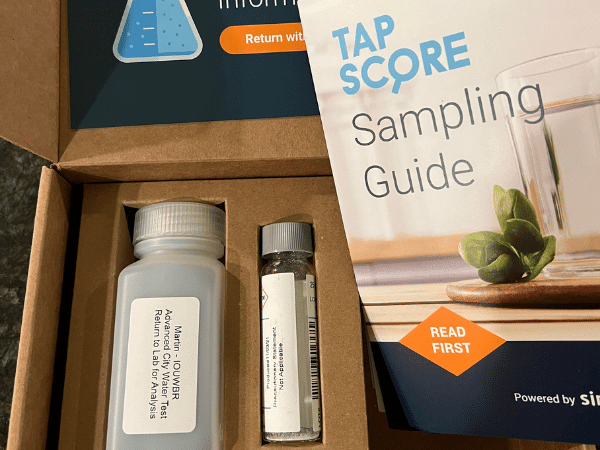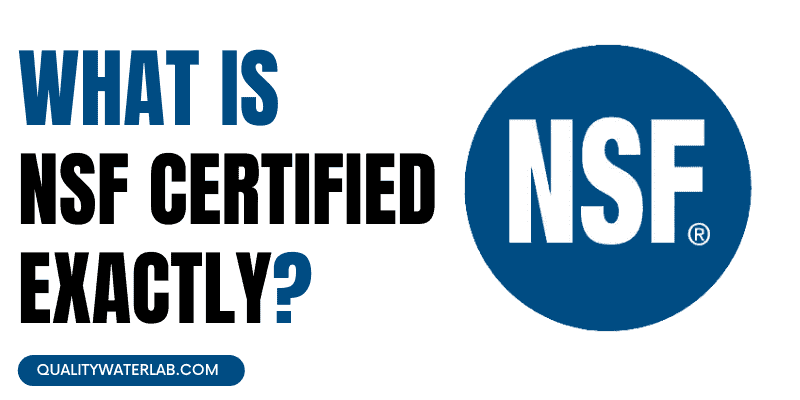For a product so simple, water filter pitchers tend to stir up strong opinions. Some folks swear by them — others say you might as well pour your money down the drain.
The truth? These budget-friendly filters can actually pack a punch… if you pick the right one and know what’s in your water to begin with. They’re not a one-size-fits-all fix — but in the right situation, a good filter pitcher can help you ditch bottled water for good and save some serious cash along the way.
Before you toss one in your cart or write them off completely, let’s break down what these handy little carafes actually do (and what they don’t).
🔑 Key Takeaways
- 💧 Filter pitchers can definitely help — just make sure they’re built to remove what’s actually in your water.
- 🧪 Get your water tested first — especially if you’re worried about things like lead, fluoride, or arsenic.
- 💲 Easy on the wallet, easier to use — a solid option if you’re renting, on a budget, or just want better-tasting water without hassle.
- 🚫 One pitcher, not one-size-fits-all — they’re great for sipping, but won’t cut it for showers, laundry, or whole-home coverage.
- 🔍 Look for NSF-certified models — they’re third-party tested and actually do what the box says.
💭 So… Do Filter Pitchers Actually Work?

They might seem simple — just fill and pour — but modern filter pitchers can pull their weight when matched with the right job.
While early models mostly tackled chlorine, today’s pitchers can target a wide range of contaminants, from heavy metals like lead and arsenic to PFAS, fluoride, and even microplastics. The key? Picking one that’s made for your water.
But — and it’s a big one — no filter pitcher can do everything. They’re specialized tools, not one-size-fits-all fixes.
💡 Smart Tip: Always check what a pitcher is certified to reduce. Brands often list dozens of claims, but unless they’ve got third-party testing to back it up, it’s marketing fluff.
🧪 Why Testing Your Water Matters First

Even the best filter pitcher is only as good as its match to your water. If you don’t know what you’re trying to remove, it’s easy to pick the wrong product — or worse, miss a serious contaminant.
Here’s why water testing is the first step:
- 🧬 Many dangerous contaminants are invisible — things like lead, arsenic, and PFAS have no taste or smell.
- 📊 Your local utility report may not tell the full story, especially if contaminants leach into your plumbing after treatment.
- 🔎 Private well owners are on their own — no agency monitors well water for safety.
- 💸 Testing saves money — premium filters that remove things like fluoride or chromium can be pricey. If those aren’t in your water, why pay extra?
🔗 Want to know exactly what’s in your water? This water testing guide will walk you through your options — and the EPA’s water safety framework is also worth a peek.
Bottom line? Test before you buy. The results will point you to the right pitcher and give you peace of mind — that you’re filtering the right stuff. overpriced filter that you don’t need if those substances aren’t in your water?
💧 Are Water Filter Pitchers Actually Worth It?
Pitcher filters seem too simple to be effective — but for many households, they strike a good balance between: cost, convenience, and cleaner-tasting water.
✅ The Upsides of Filter Pitchers
- Affordable Fix: Most high-quality pitchers cost under $50 and can replace hundreds of plastic bottles — a win for your wallet and the planet.
- Improved Taste: Great for reducing chlorine, odor, and that weird “tap” taste.
- No Tools Required: Unlike whole-house or undersink filters, pitchers don’t need plumbing or installation — just fill and go.
- Eco-Friendly: Reusable and less wasteful than bottled water.
- Portable: Take it to your office, college dorm, or Airbnb. Try doing that with a countertop system.
❌ The Tradeoffs
- Limited Output: A pitcher works for drinking and small cooking tasks — not your whole home.
- Slower Flow: Filtering can take time, especially as filters age.
- Short Filter Life: Expect to swap filters every 1–2 months.
- Not All Created Equal: Some budget models barely improve water quality, while others rival serious systems — but cost more up front.
- Durability Concerns: One drop and some pitchers are toast. Go easy on them.
💬 Bottom Line
Pitcher filters are worth it — if you choose one that fits your needs. For smaller households or casual use, they’re a great entry-level solution. Just remember, if your water has serious issues (like lead, PFAS, or well water contaminants), you may want to upgrade to something more robust — like an undersink or whole-home filters, you could spend as much in a year as it would cost to purchase an on-demand filter.
🧪 What Do Water Filter Pitchers Actually Remove?

Not all pitcher filters are created equal — and that’s not a bad thing. Some are designed to tackle taste and odor, while others go after heavy hitters like lead or PFAS. The trick? Choosing one that matches what’s actually in your water.
🔍 Common Contaminants Removed by Top-Tier Pitchers:
- Chlorine & Chloramine – Removes that swimming pool smell and chemical aftertaste.
- Lead – Essential for homes with older pipes; look for NSF/ANSI 53-certified filters.
- Fluoride – Not all filters remove it — if that matters to you, double-check the specs.
- Arsenic & Chromium-6 – Found in some well water and city supplies; best tackled with advanced filters.
- Pesticides & Herbicides – A concern for rural areas or homes near agriculture.
- PFAS (“Forever Chemicals”) – Linked to long-term health issues; some specialty pitchers can now reduce them.
- Microplastics & VOCs – Certain models can even catch emerging contaminants and residues from industrial runoff.
💡 Pro Tip: Before choosing a pitcher, test your tap water. It always make sense to understand what’s in it — and how to match a filter to your specific water profile. You’ll avoid overspending and underfiltering.
🧪 What Can Water Filter Pitchers Actually Remove?
Not every pitcher is built the same — but some go way beyond just fixing taste. If your home has older pipes or you’re in an area with questionable infrastructure, a good filter can do a lot more than make water not gross.
Here’s what top-performing filter pitchers (especially NSF-certified models) can help reduce or remove:
- Lead & Copper – leached from aging plumbing
- Chlorine & Chloramine – harsh disinfectants that ruin flavor
- Fluoride – can be reduced with specialty filters
- Arsenic & Chromium-6 – naturally occurring but risky
- Pesticides & Herbicides – runoff from lawns or farms
- PFAS (“Forever Chemicals”) – the stuff that really sticks around
- VOCs – nasty stuff like benzene or TCE
- Microplastics & Drug Residue – increasingly common in tap water
- Parasites & Cysts – like Giardia, especially in untreated sources
💡 Pro Tip: Want to double-check what your filter can handle? Look for those NSF/ANSI 42, 53, or 401 certifications on the box — that’s your golden seal.
⚖️ Are Water Filter Pitchers Worth the Investment?

Pitchers aren’t miracle workers — but for the price, they punch way above their weight. Let’s lay out the ups and downs so you can see if one belongs in your kitchen.
| ✅ Pros | 🚫 Cons |
|---|---|
| Low upfront cost Great for renters, small spaces, or tight budgets |
Limited capacity Not ideal for families or high-demand households |
| Easy to use No tools, no installation, just fill and pour |
Slower output Need to wait for water to filter through |
| Portable Take it anywhere — dorms, travel, rentals |
Not for whole-home use Only filters drinking/cooking water |
| Sustainable Reduces reliance on bottled water |
Filters don’t last long May require frequent replacements |
| Effective against many contaminants (when properly matched) |
Varying quality Cheap models may underperform or break |
💡 Helpful to Know: Filter pitchers are a great way to dip your toes into better water — especially if a full system isn’t in the cards just yet. Just be sure you’re using the right type for your specific water needs.
🧪 Why NSF Certification Actually Matters

When it comes to water filter pitchers, not all are created equal — and some barely do more than chill your water. That’s where NSF certification comes in.
NSF International is an independent organization that verifies whether a water filter actually removes the contaminants it claims to. It’s the industry’s gold standard — and it’s a great way to know you.
🛡️ Look for Filters That Meet These NSF Standards:
- NSF/ANSI 42 – Reduces chlorine, taste, and odor
- NSF/ANSI 53 – Targets heavy hitters like lead, cysts, and VOCs
- NSF/ANSI 401 – Covers emerging contaminants like pharmaceuticals and PFAS
You’ll usually see these listed on the product specs. If you don’t? Keep shopping.
👉 What does NSF-certified really mean? Here’s a full breakdown.
💡 Helpful to Know: NSF certification isn’t just a fancy label — it’s independent proof that your filter is actually doing its job, not just masking off-tastes.
💭 Final Thoughts
Water filter pitchers may not be flashy, but when matched to your water quality, they can absolutely get the job done. Whether you’re trying to ditch that chlorine taste, reduce exposure to PFAS or lead, or just drink more water without all the plastic — a solid pitcher can be a smart move.
They’re practical and easy to work into your routine — especially if you just want cleaner-tasting water without committing to a full filtration system.
💡 Smart Tip: Just make sure you’re testing your water and picking a model that’s actually certified to reduce what you care about.
Want help finding one that fits your needs? Check out our top-rated water filter pitchers.
 146 people found this helpful. Was this guide helpful to you?
146 people found this helpful. Was this guide helpful to you? 

